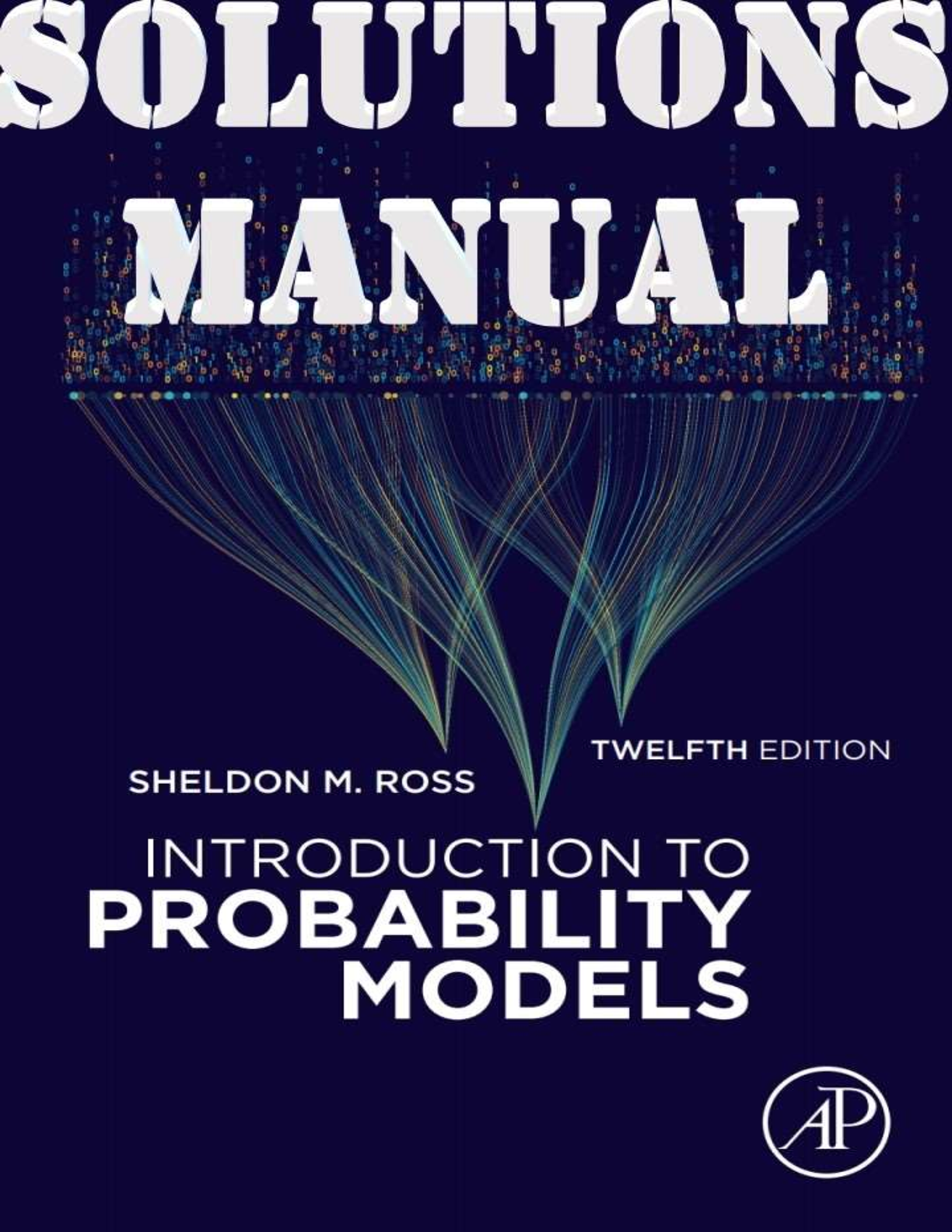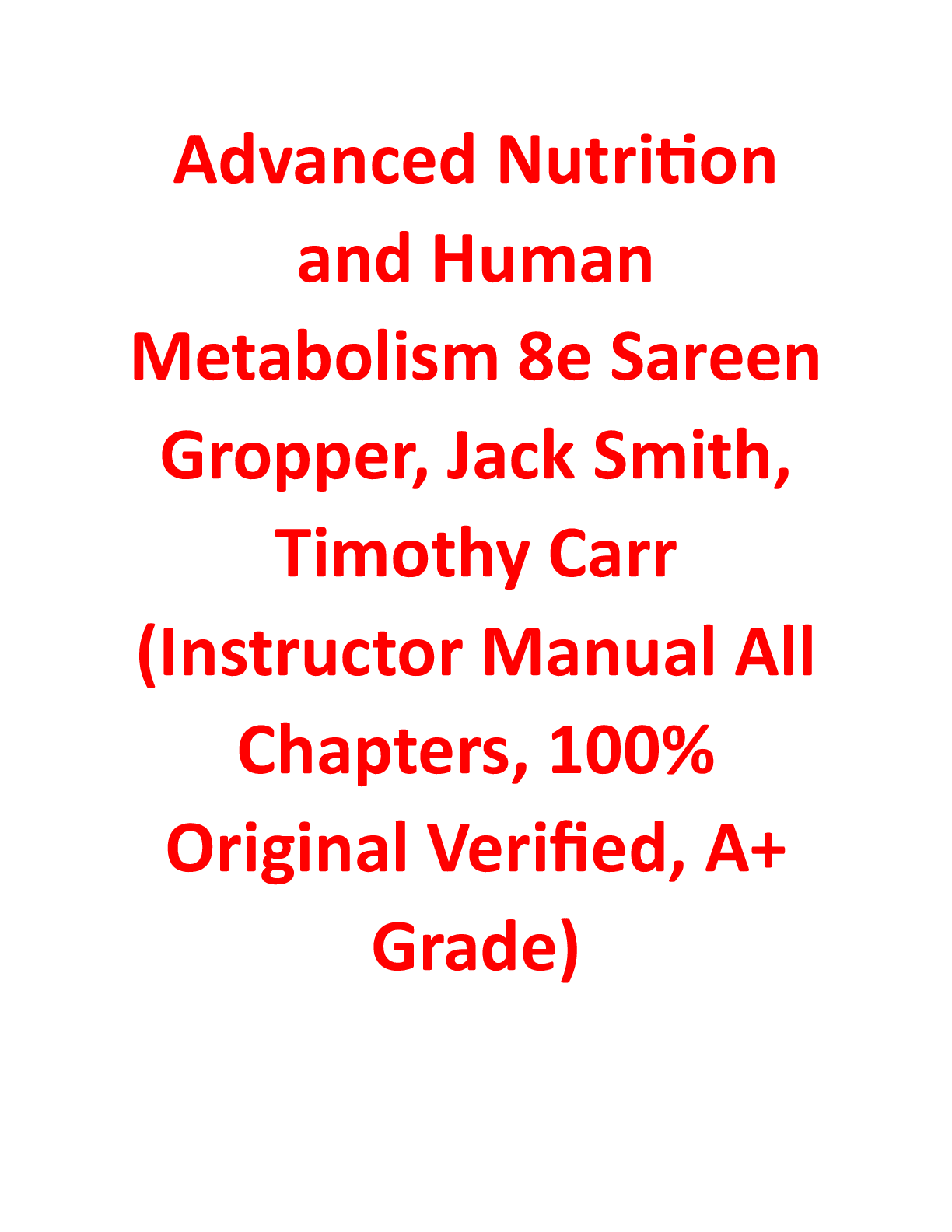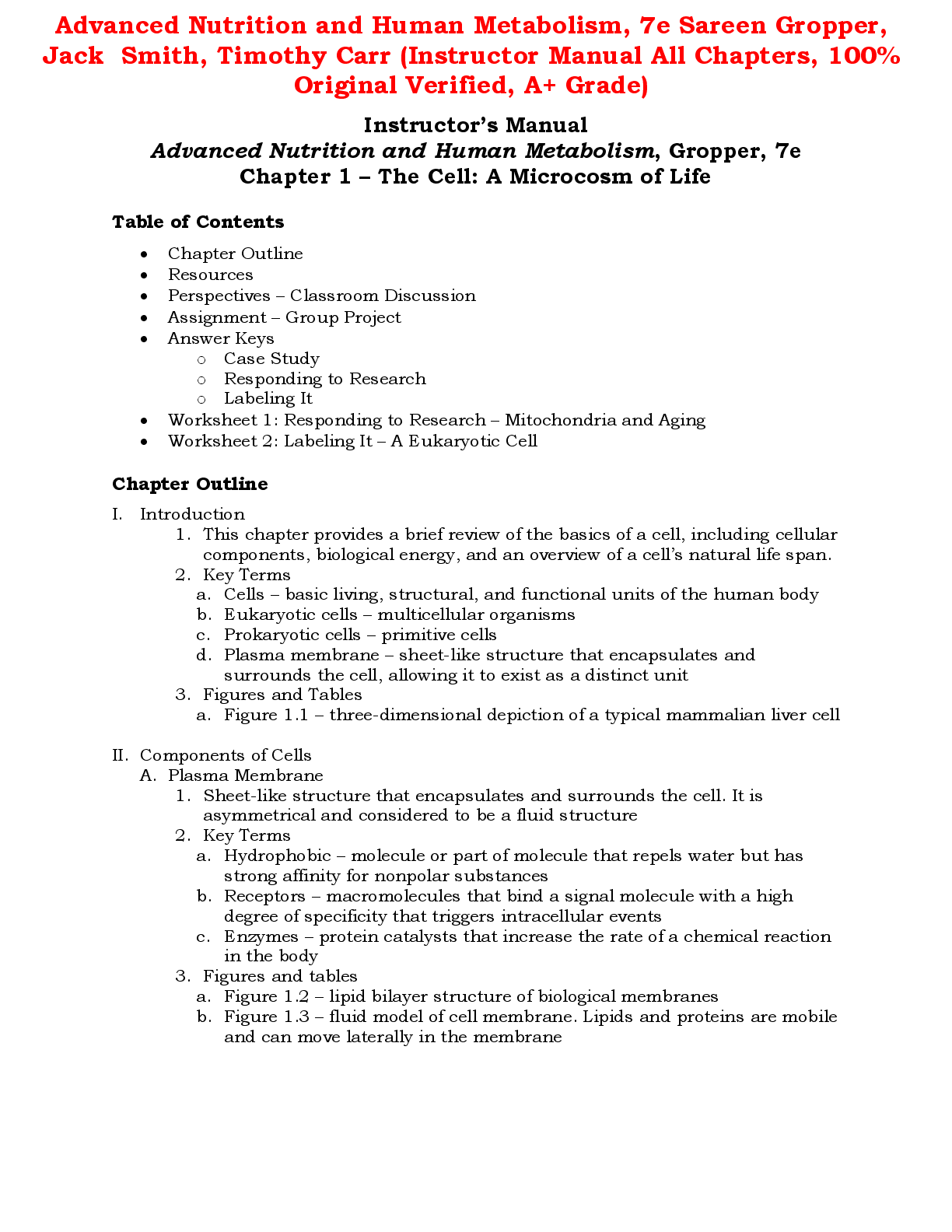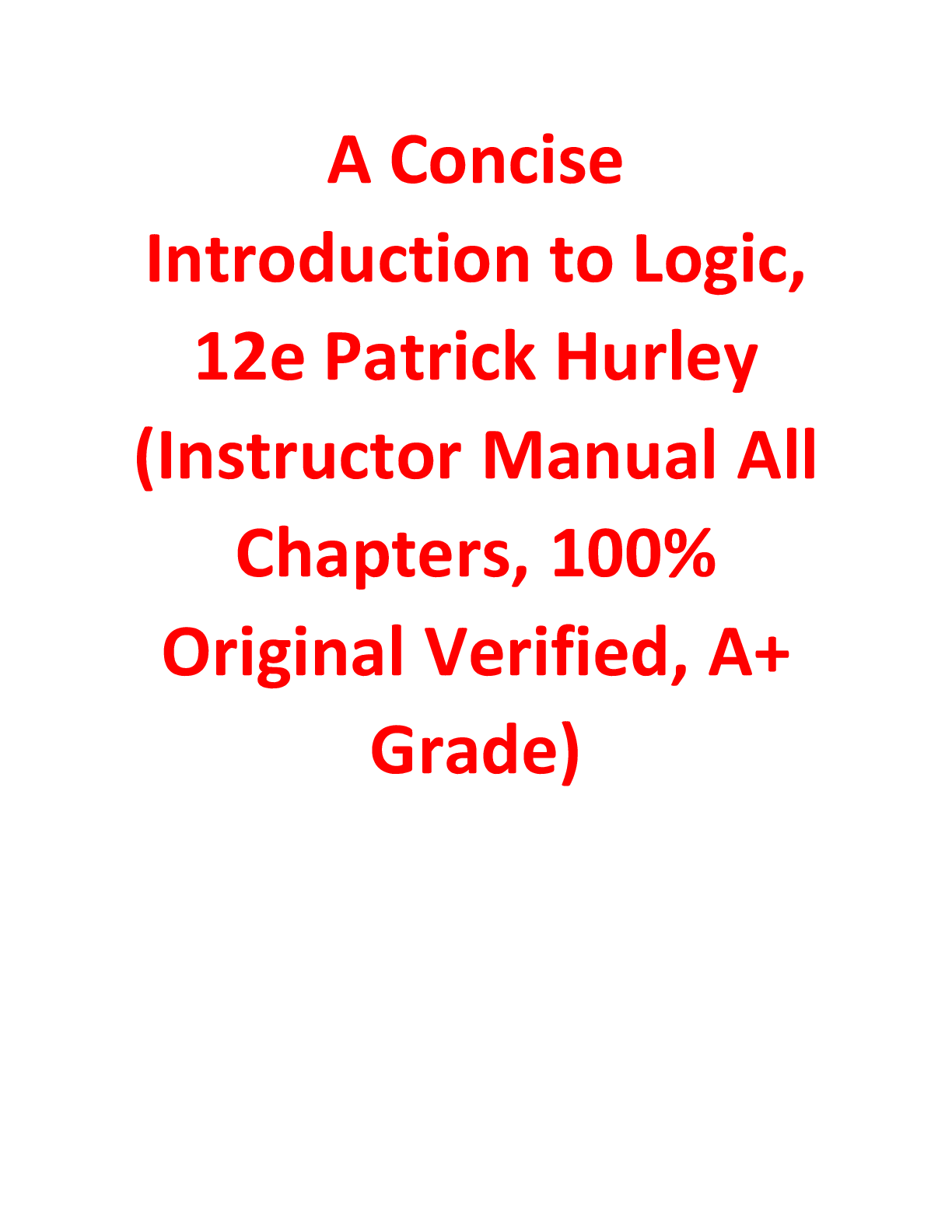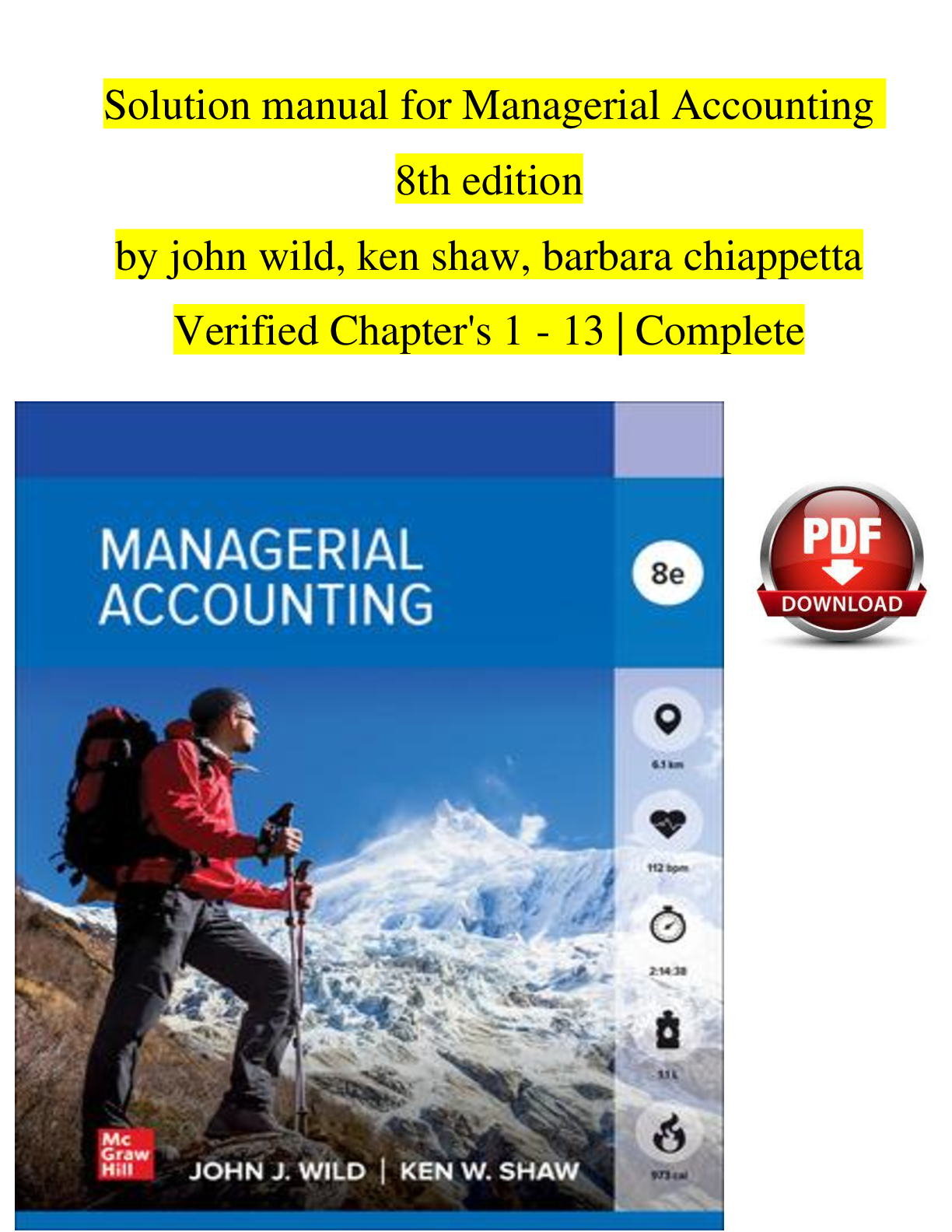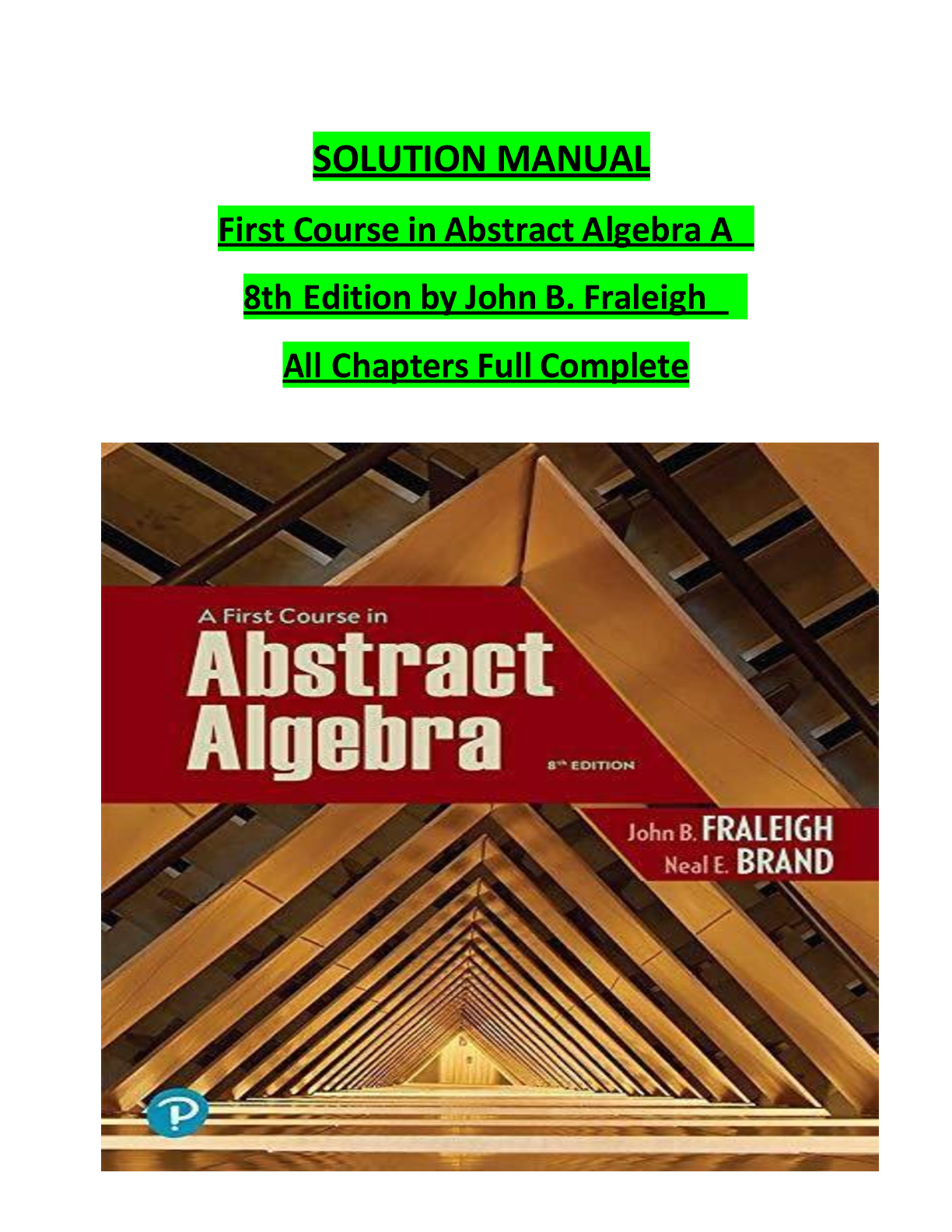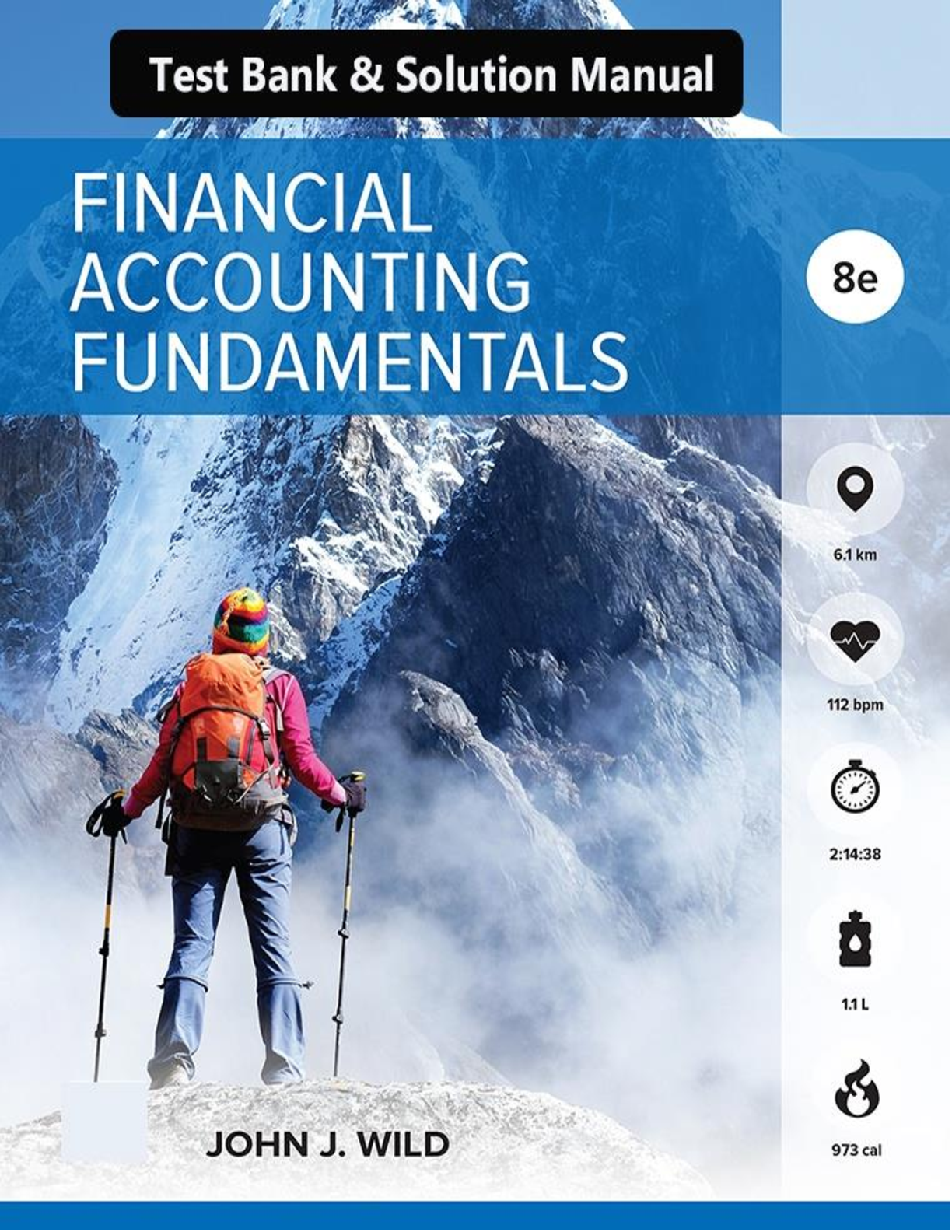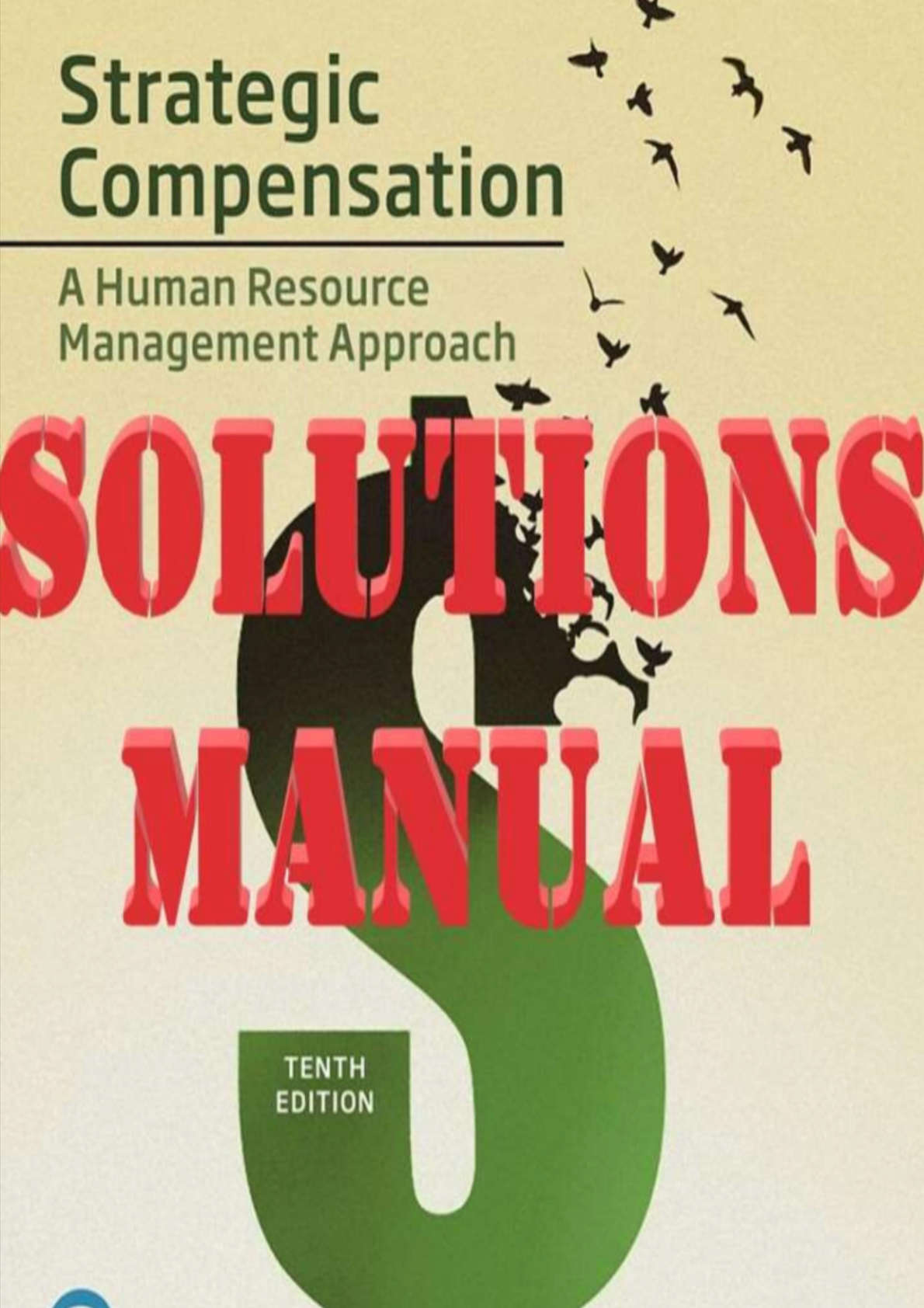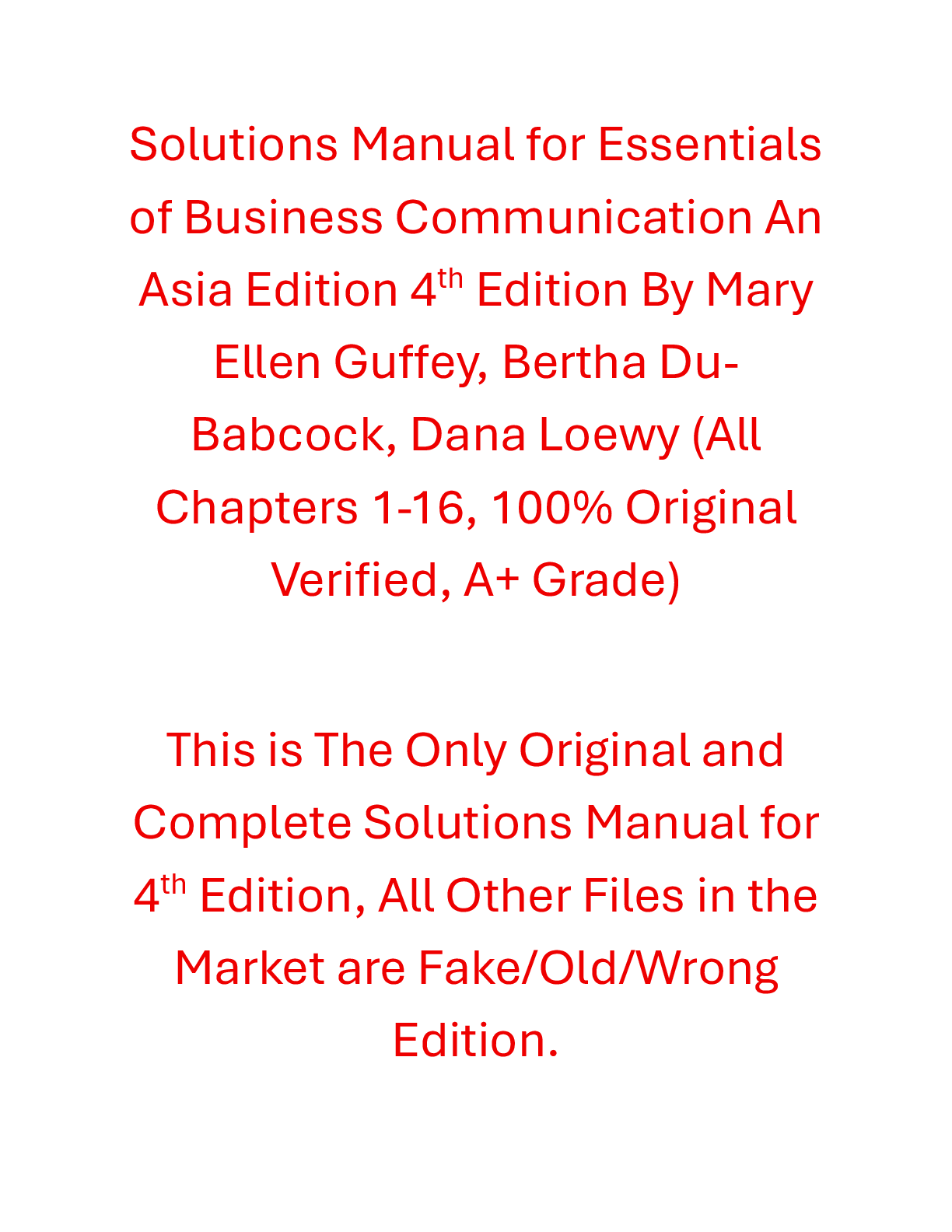Nutrition > SOLUTIONS MANUAL > Nutrition Through the Life Cycle, 7e Judith E. Brown (Instructor Manual All Chapters, (All)
Nutrition Through the Life Cycle, 7e Judith E. Brown (Instructor Manual All Chapters,
Document Content and Description Below
Nutrition Through the Life Cycle, 7e Judith E. Brown (Instructor Manual All Chapters, Resources Included in This Document 1. Lists of chapter learning objectives and key terms 2. “Lecture launc ... her”: true/false pop quiz 3. Assignment worksheets with answer keys: cultural considerations in meal planning, calorie calculations, USDA Food Patterns diet analysis 4. Chapter outline/summary 5. List of relevant websites organized by topic 6. Internet activities: (A) Nutrition.gov site evaluation, (B) DRI tables, (C) USDA Super Tracker, (D) Research Room site topical study 7. Discussion questions 8. Classroom activities: (A) dietary guidelines for fat, (B) class debate (“good” and “bad” foods), (C) technology storage and retrieval Learning Objectives 1.1 Demonstrate a working knowledge of the meaning of the 10 nutrition concepts presented. 1.2 Apply knowledge about the elements of nutrition labeling to decisions about the nutritional value of foods. 1.3 Cite two examples of how nutrient needs change during the life cycle and how nutritional status at one stage during the life cycle can influence health status during another. 1.4 Describe the components of individual-level nutrition assessment. 1.5 Identify the basic elements of four public food and nutrition programs. 1.6 Apply the characteristics of healthy dietary patterns to the design of one. Worksheet 18-1: Case Study—Assessment of the Nutritional Status of the Elderly John, 78 years old, is a sometimes homeless veteran. He is missing many teeth from years of no dental care. John receives a monthly retirement check but he has great difficulty meeting his monthly bills, let alone buying enough food, and this has caused many evictions. When he can afford them, John has his prescriptions filled for a diuretic (for high blood pressure) and a statin (for high cholesterol). John isn’t sure what his current weight is, but he has had to tighten his belt to the last notch over the past eight months. He has no family with whom he is still in contact, and he eats all of his meals alone. At a neighbor’s insistence, John is visiting the local senior center to eat lunch for the first time. The day he visits, each person is having a free nutrition screen completed by a program staff member. Questions: 1. Using the “Determine Your Nutritional Health” checklist (p. 459), assess John’s nutritional status. What is his score? 2. Review the “DETERMINE: Warning signs of poor nutritional health” checklist shown in Table 18.5 (p. 458). Prioritize John’s nutrition problems based on this screening tool. 3. What parts of the nutrition education handout created by the University of Florida IFAS Extension (access at http://edis.ifas.ufl.edu/he944) should be used to provide nutrition education to John? 4. What should the local senior center registered dietitian do for John to help address the nutrition problems you identified in #2?Worksheet 18-2: Estimate the Nutritional Requirements for the Elderly Directions: Use the information from Chapter 18 (Nutrient Recommendations, p. 464) to complete this worksheet. 1. Determine the estimated calorie requirements (for weight maintenance) for John, a 78-year-old male, who weighs 146#, is 5’11”, and is considered sedentary. 2. Does John need to gain or lose weight? How might this change his estimated calorie requirements? 3. Determine John’s estimated protein requirements. Also, John has difficulty chewing due to missing many teeth, so he avoids eating many types of meats. What suggestions do you have to help him consume an adequate amount of protein? 4. Determine John’s estimated fluid requirements. 5. John’s usual food intake is as follows: coffee, pastry, tuna salad on white bread, cola, potato chips, canned beans, hot dogs, coffee, and pie. What suggestions do you have to help him reduce his risk for chronic disease using dietary modifications?Instructor’s Manual1 for Chapter 19 – Nutrition and Older Adults: Conditions and Interventions Resources Included in This Document 1. Lists of chapter learning objectives and key terms 2. “Lecture launcher”: brief discussion of the brain’s energy and nutrient needs 3. Assignment worksheets with answer keys: Alzheimer’s case study, warfarin case study 4. Answer keys for textbook case studies 19.1 and 19.2 5. Chapter outline/summary 6. List of relevant websites organized by topic 7. Internet activities: (A) online cancer resources evaluation, (B) online osteoporosis resources evaluation, (C) supplement fact sheet summary 8. Discussion questions 9. Classroom activities: (A) extension of Case Study 19.2, (B) mock interview (osteoporosis), (C) PubMed research (underweight/weight loss) Learning Objectives 19.1 Describe key nutritional approaches to the most prevalent chronic diseases of adults 65+, recognizing the heterogeneity of older populations. 19.2 Describe key nutritional approaches to heart disease in adults 65+, recognizing the heterogeneity of older populations. 19.3 Describe key nutritional approaches to addressing strokes and related diseases in adults 65+, recognizing the heterogeneity of older populations. 19.4 Describe key nutritional approaches to hypertension in adults 65+, recognizing the heterogeneity of older populations. 19.5 Describe key nutritional approaches to diabetes in adults 65+, recognizing the heterogeneity of older populations. 19.6 Explain how sarcopenia combined with obesity affects fitness and weight management. 19.7 Describe key nutritional approaches to osteoporosis in adults 65+, recognizing the heterogeneity of older populations. 19.8 Identify three or more nutritional strategies that contribute to oral health. 19.9 Describe the three most common GI problems of older adults, along with nutritional management strategies to ameliorate each condition. 19.10 Describe key nutritional approaches to osteoarthritis in adults 65+, recognizing the heterogeneity of older populations. 19.11 Describe key nutritional approaches to cognitive impairment, dementia, and Alzheimer’s disease of adults 65+, recognizing the heterogeneity of older populations. 19.12 Understand how comorbidities and polypharmacy increase nutritional risk in older adults. 19.13 Explain the challenges faced by underweight individuals and the consequences of sarcopenia on day-to-day functioning. 19.14 List three or more signs of dehydration and explain why maintaining hydration status is important for the health of an older person. 19.15 Explain how social support during bereavement can help the survivor to stay healthy. 1 revised by Nadine Kirkpatrick, Sacramento City College, and Carrie King, University of Alaska at Anchorage; originally by U. Beate Krinke, University of MinnesotaKey Terms healthspan healthy quality of life medical nutrition therapy (MNT) cerebrovascular disease transient ischemic attacks (TIAs) ischemia aneurysm aphasia thrombus cerebral embolism carotid artery disease atrial fibrillation glycosylated hemoglobin A1C (HbA1c) sarcopenia sarcopenic obesity telopeptides xerostomia gingiva lower esophageal sphincter (LES) cobalamin homocysteine methylmalonic acid (MMA) diverticulitis gluten memory impairment mild cognitive impairment (MCI) adipocytokines antidiuretic hormone [Show More]
Last updated: 9 months ago
Preview 1 out of 751 pages
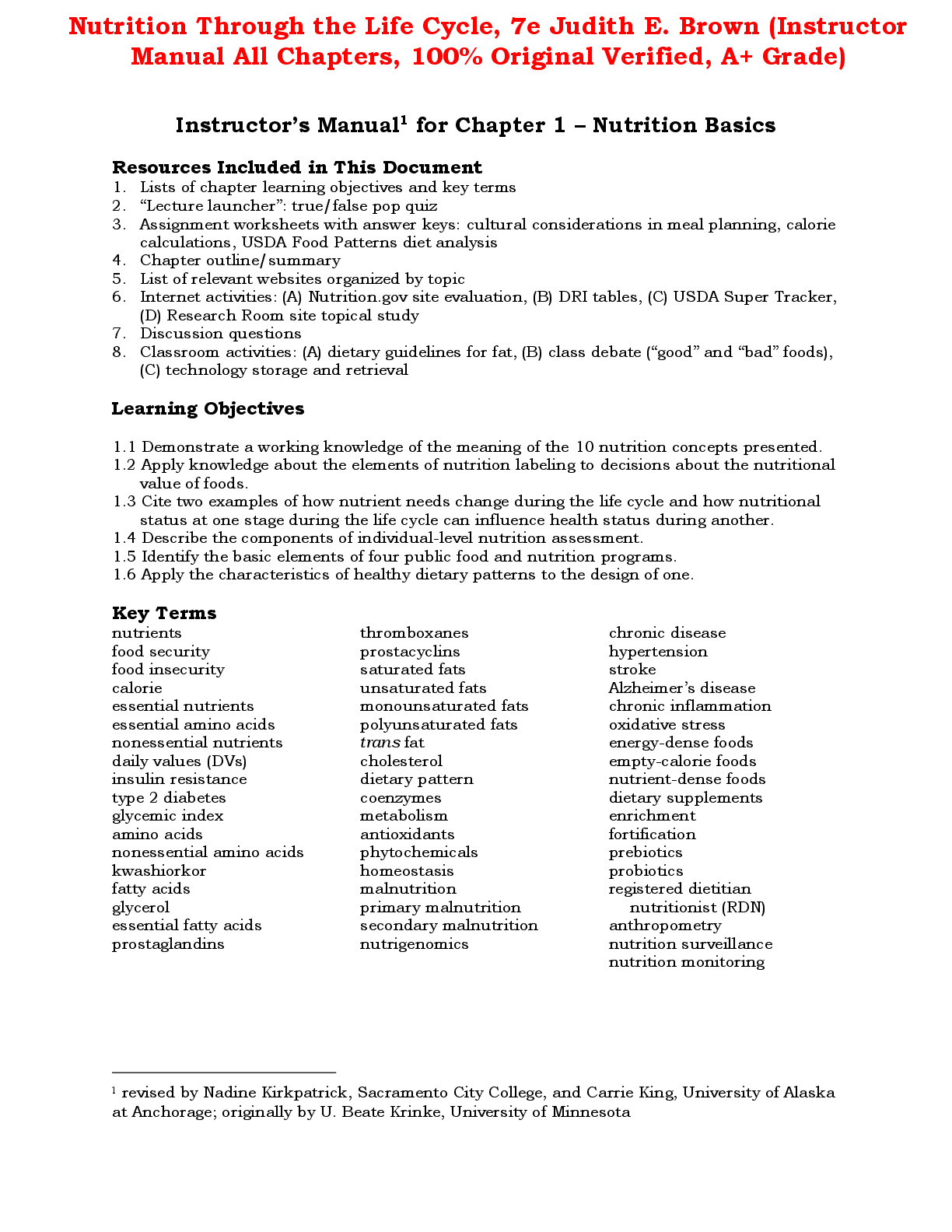
Buy this document to get the full access instantly
Instant Download Access after purchase
Buy NowInstant download
We Accept:

Reviews( 0 )
$13.50
Can't find what you want? Try our AI powered Search
Document information
Connected school, study & course
About the document
Uploaded On
Mar 13, 2025
Number of pages
751
Written in
All
Additional information
This document has been written for:
Uploaded
Mar 13, 2025
Downloads
0
Views
61

